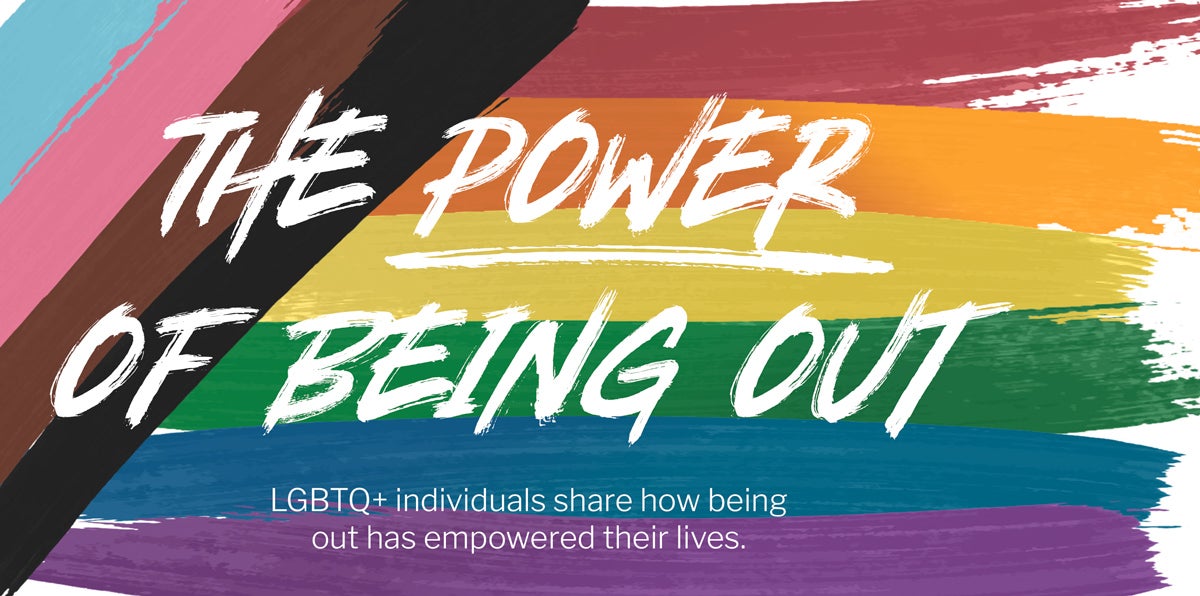
As a mental health foundation, we understand too well that the health and well-being of LGBTQ+ individuals goes to the heart of our core values. A large part of each queer person’s journey is coming out, as there is power in being out as one’s true self. In fact, a 2013 study at the University of Montreal found that lesbian, gay, and bisexual individuals who were out to others had lower levels of stress-related hormones and fewer symptoms of anxiety, depression, and burnout.
In recognition of Pride Month, we reached out to the LGBTQ+ community and received several responses. We asked each of them a series of wide-ranging questions about their queer identities, coming out, and how being out has impacted their lives and the lives of those around them. We also gave each person an opportunity to ask themselves a question and offer advice to their younger self about the mental health challenges to come.
Anna Nguyen
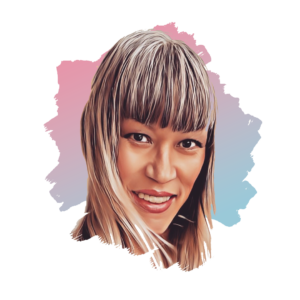 Anna is a Vietnamese American transgender woman, a career software engineer, and according to Anna, the world’s first and only transgender feminine runway model over the age of 50. She’s been out to her wife since 2013 and came out to the world the following year.
Anna is a Vietnamese American transgender woman, a career software engineer, and according to Anna, the world’s first and only transgender feminine runway model over the age of 50. She’s been out to her wife since 2013 and came out to the world the following year.
Coming out for Anna was “freeing and joyful,” she said. “I used to have social anxiety. I used to be quite introverted and quiet. After I started my transition, I became more and more outgoing and assertive; now you can’t shut me up!” She added, “I have experienced such euphoria and contentment. Indeed, I tell people that I don’t have ‘gender dysphoria’ but rather I have ‘gender euphoria!’”
And how has being out empowered her? “When I could stop hiding who I am, when I stopped being ashamed of my gender identity, I started feeling much freer to speak up, to stick out, to use my voice more intentionally and forcefully.”
When we asked Anna how being out as a transgender woman, attracted to feminine ideals, changed the lives of those around her, Anna replied “I benefitted so much from the queer and gender diverse resources before and during my transition that I endeavor to give back as much as I can. I have served as president on the board of PFLAG Austin for the past several years.”
She continued, “The most important lesson is to learn to value one’s own feelings rather than being concerned about other people’s opinion. It’s a difficult lesson to learn and to practice, but one must make oneself happy and content first before one can be productive and be an advocate for others.”
Finally, when asked if she had any advice for her younger self, Anna said “activism [is] like singing in a choir, singing a great choral piece. Every chorister has a part. While some are singing, some will be silent and taking a breath, resting. Nobody will be singing all the parts all the time, yet the music will still be wonderful.”
She concluded by asking herself “Would I rather spend the rest of my life as a man or a woman?” Her answer: “The immediacy, clarity, and emphasis of the answer [to live as a woman] was a lightning bolt that lit up the path of the rest of my life.”
Darrell Wiggins
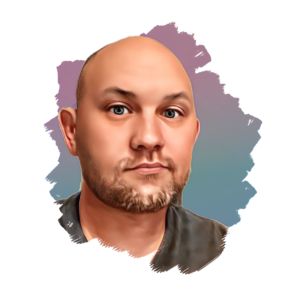 Darrell is the digital content strategist here at the Hogg Foundation. Darrell came out as gay just after his first year of college, he is now out and proud, but is very honest about how his coming out has impacted his mental health. “There have been, and still are some significant mental health challenges for me. As a gay man from a very conservative family, there wasn’t any support or welcoming environment at home; still isn’t. In the LGBTQ+ community, many of us are forced to find a chosen family that loves and supports us just like blood family should. It was these people who were there for me, and their support helped me through the most challenging times in my life.”
Darrell is the digital content strategist here at the Hogg Foundation. Darrell came out as gay just after his first year of college, he is now out and proud, but is very honest about how his coming out has impacted his mental health. “There have been, and still are some significant mental health challenges for me. As a gay man from a very conservative family, there wasn’t any support or welcoming environment at home; still isn’t. In the LGBTQ+ community, many of us are forced to find a chosen family that loves and supports us just like blood family should. It was these people who were there for me, and their support helped me through the most challenging times in my life.”
Darrell continued, “Everyone who is in my life knows my true self. For some, being gay labels me as a rebel, someone lost to their cause. But for most in my life, it’s just a part of me, being gay is not who I am, it’s just another thread in the tapestry that is me.”
Hear more about Darrell’s story in his opinion post.
Does he have any insights for our readers? “When I think how different my life would have been, had I lived the life my family wanted for me, I know that the conscious effort I made to live my truth all those years ago was the right one. I do have regrets in life, but living my truth is not one of them.”
And how has being out empowered Darrell? “Being out has allowed me to speak up and fight. I’m able to participate in the discussion about queer issues” (like this blog post) “and fight for my rights and the rights of other disenfranchised groups. The future is queer and diverse. You either need to get out of the way or stand with us.”
And the advice he’d give to himself as a kid, “The road ahead is a rough one. There will be bullying and failures by the adults in your life, but you are stronger than you know. Just like the Legos you love so much, you can use the blocks of the world around you to build yourself a life, a home, a family of your own.”
Tracy Y. Jennings
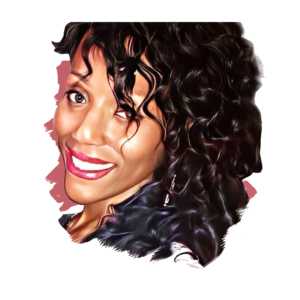 Tracy is an out-and-proud Black lesbian, who works as an accountant. Tracy has been out since her senior year of high school and feels freer. “I love the fact that I am able to speak my mind and feel confident about it. I’m open to all that is coming my way! It feels good!”
Tracy is an out-and-proud Black lesbian, who works as an accountant. Tracy has been out since her senior year of high school and feels freer. “I love the fact that I am able to speak my mind and feel confident about it. I’m open to all that is coming my way! It feels good!”
Being out has changed the lives of those around her. Tracy says that “People now see an open person who’s not afraid to speak her mind. I am stronger and wiser than before. It’s clear.”
She also shared some personal insights. “Love who you want to love and be YOURSELF! Don’t allow what others say to stop you from becoming amazing in this life! WE ARE ALL HERE FOR A REASON!”
Read more from Tracy when we talk to queer people of color.
Finally, when asked what advice she’d share with her younger self about the mental health challenges to come, she said “Don’t be afraid to speak. Think before you speak as well. Do not be quick to say yes. Set boundaries for yourself. Don’t stop caring and helping others but do know when to say ‘NO!’”
Emily and Karen Blanchette
Editor’s note: I know this couple very well. They are my close friends and neighbors. Karen is a talker and always the life of the party, everyone’s friend. Emily is generally more reserved, but when she speaks, she speaks from her heart, and you should listen. While they submitted their stories separately, I wanted to combine them here. While their individual stories are each independently powerful, they become even stronger when told together.
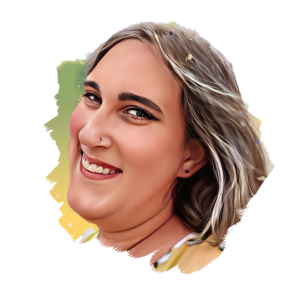 Emily and Karen met in college, fell in love, and got married. They both work at the University of Texas at Austin, as a software engineer and a data analyst, respectively. However, when they met and married, Emily was known by another name and identified as a different gender. They’ve now been married for over nine years, and this is how they found their power in coming out, how they discovered their true selves together.
Emily and Karen met in college, fell in love, and got married. They both work at the University of Texas at Austin, as a software engineer and a data analyst, respectively. However, when they met and married, Emily was known by another name and identified as a different gender. They’ve now been married for over nine years, and this is how they found their power in coming out, how they discovered their true selves together.
When asked when she came out, Karen says “I don’t really feel like I officially ‘came out.’ While I have long believed that sexuality is a spectrum and that I was likely somewhere on that spectrum, it never occurred to me to actually embrace that identity until my spouse came out as a [bisexual] transgender woman [in 2020, during the pandemic] and continuing that relationship meant forcing a reckoning of my own queer identity.” With Emily now living her truth, she states “I experience so much joy now. I am active in my life now.”
She wants us to consider how “a transgender person [now] living their life out is their true self. If you were to see pictures of that person before they came out and/or started living their truth, alongside [current] pictures…look at their eyes. Really look. Look at how much more life and vibrance you [now] see in their eyes. male-to-female and female-to-male, and everywhere else on the transgender/nonbinary spectrum–it doesn’t matter. They just have so much more joy for life.”
When asked how being out changed their lives, mental health, and well-being as a couple, Emily said “I am experiencing the fullness that life has to offer me. The highs are higher, and the lows are lower. It’s so invigorating. I no longer mask behaviors that would have seemed ‘too feminine’ for me in the past. I’m comfortable talking about myself and letting others in, where I was known for being quiet and somewhat reserved before.” Karen added, “For me, accepting that I was in a visibly queer relationship really shook up the status quo. I have been a habitual rule-follower my entire life. I did all the ‘right’ things that mainstream society tells you to do. I graduated college, got a job, got married, bought a house, etc. I was living the ‘American Dream’ – but was it my dream? My wife coming out disrupted all of these expectations. I felt like I had to choose between this ‘idea of what my life should look like’ and this person with whom I had fallen deeply in love. How could I not choose love?”
“Embracing queerness meant embracing freedom from the rules and expectations that have been placed on me since I was born. Embracing queerness meant embracing my soulmate completely in all her authenticity. Embracing queerness meant embracing the vast diversity of ways of being. Love and relationships and gender identities can be expressed in all sorts of variations, and I think that’s beautiful.”
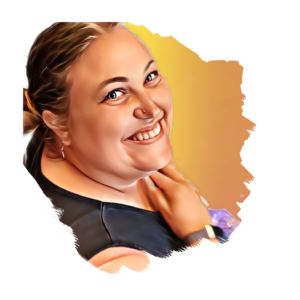 As to how being out as a bisexual transgender woman has changed those around her, Emily said “Being out has forced some people close to me to re-examine their views about LGBTQ+ people. For several others, I get to be an example queer representation to my friends’ and families’ kids, just living life as my authentic self.”
As to how being out as a bisexual transgender woman has changed those around her, Emily said “Being out has forced some people close to me to re-examine their views about LGBTQ+ people. For several others, I get to be an example queer representation to my friends’ and families’ kids, just living life as my authentic self.”
And Karen, as a bisexual cisgender woman? “When my wife first came out as transgender, my very first thought was that our relationship was over or doomed. It seemed inevitable. I couldn’t wrap my head around how to make this relationship work because I hadn’t fully embraced queerness as a personal attribute at that point in time. However, continually working on our marriage has not only shown me that the transition from straight-passing to visibly queer is possible, but it has also shown people around me as well. Transition of a spouse doesn’t have to be the death knell of marriage and I hope that our example offers hope to others who may be in a similar situation.”
Karen added, “It’s easy and common to feel like an imposter, especially when you are bisexual. I definitely have moments when I don’t feel “gay enough” and, alternatively, moments when I don’t feel “straight enough”. Feeling like an imposter doesn’t mean I am an imposter. I have a right to be here, even if I got here via a different path than most queer people. Bisexuality is valid and we need to embrace it, especially in straight-passing relationships, because I think bisexuals often get overlooked or misclassified depending on what their relationship looks like from the outside.”
“It wasn’t until I was 30, that I realized my truth,” said Emily. “I think some of the things that play into that include the overall lack of positive representation of transgender women at that time and the fact that I didn’t have the language and terms or other LGBTQ+ awareness to understand and contextualize the feelings I was experiencing. I also did not have the support structure at that time that LGBTQ+ youth and adults should have when they come out. But now, I have so many supportive people in my life. When I came out to my friends and family, they celebrated me finding myself and wanting to share that with them.”
Karen then followed with “Being out empowers me to make up my own rules for what constitutes a ‘good life’. Being out allows me to embrace being with my wife completely. Being out means that I don’t have to hide or shrink myself to fit into anyone else’s expectations. Being out has helped me be more connected to the essence of who I am at my core and how my sexuality intersects with that.”
From everyone at the Hogg Foundation, we would like to thank our contributors for being so honest and open about the power they found in being out.
Stay tuned for Part Two in our series of Pride Month articles sharing the voices of the LGBTQ+ community, “Queer People of Color.” In Queer POC, we’ll dive into the intersectionality of being both out as LGBTQ+ and a member of a racial minority group.
